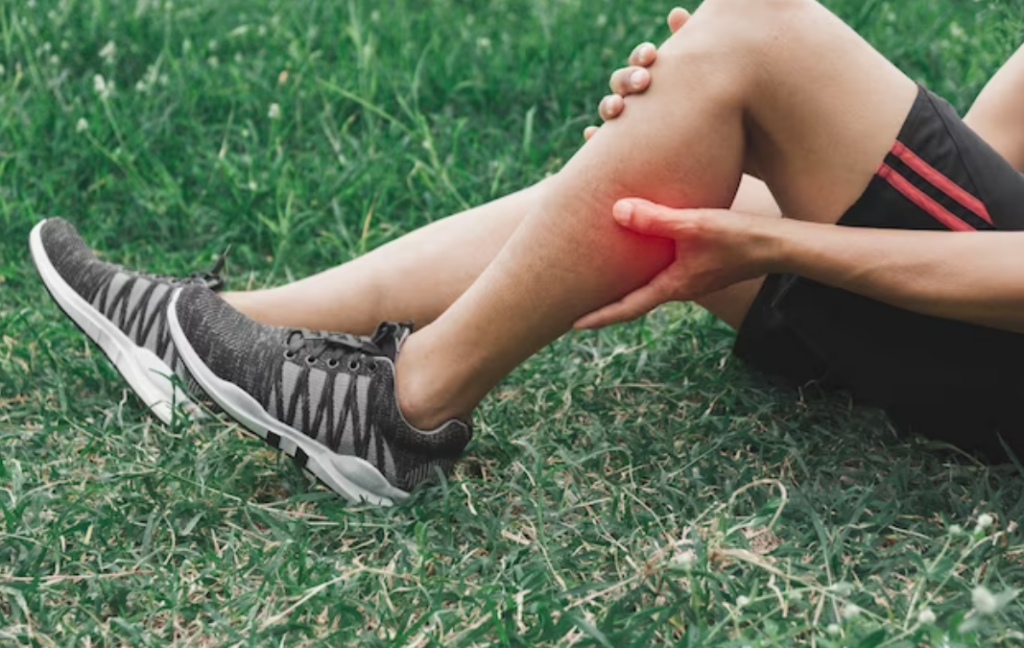If you're struggling with back pain, you're not alone, and finding effective relief can feel overwhelming. You might consider at-home remedies or professional treatments that cater to your specific needs. Simple changes like incorporating stretching routines or adjusting your workspace can make a significant difference. But what about those deeper issues that require more than surface-level attention? Exploring various techniques can reveal a pathway to lasting comfort that you might not have thought possible. Let's uncover the options that could transform your experience and lead you toward a more pain-free life.
Understanding Back Pain
Back pain is a common issue that affects millions of people, and understanding its causes is essential for effective relief. You may experience back pain due to various factors, including muscle strain, poor posture, or underlying medical conditions. Identifying the root cause can help you target your treatment more effectively.
Muscle strain often occurs when you lift something improperly or engage in activities that your body isn't used to. This can lead to acute pain that might subside after a few days.
On the other hand, chronic pain could arise from conditions like arthritis or degenerative disc disease. These issues can develop gradually and might require a different approach to manage effectively.
Your posture plays a significant role in back health. If you spend long hours sitting at a desk without proper support, you might be putting unnecessary stress on your spine. It's important to evaluate your workspace and make adjustments to promote better posture.
Additionally, lifestyle factors such as inactivity, obesity, or even stress can contribute to back pain. Regular exercise strengthens your core muscles and supports your spine, helping to prevent discomfort.
At-Home Remedies
Finding relief from back pain can often start right at home with simple, effective remedies. One of the first steps you can take is to apply heat or cold to the affected area. A heating pad or a warm bath can help relax tight muscles and improve blood circulation, while an ice pack can reduce inflammation and numb sharp pain. Just remember to wrap ice packs in a cloth to protect your skin.
Another remedy is to adjust your sleeping position. If you sleep on your back, placing a pillow under your knees can help maintain the natural curve of your spine. If you're a side sleeper, try placing a pillow between your knees for added support. This simple adjustment can alleviate pressure on your back.
Over-the-counter pain relievers can also be beneficial. Ibuprofen or acetaminophen can help reduce pain and inflammation, but always follow the recommended dosage.
Additionally, consider using essential oils like lavender or peppermint. Massaging these oils into the painful area can provide soothing relief. You can also try gentle self-massage techniques, applying pressure to tight spots in your back.
Finally, verify your workspace is ergonomically friendly. Adjust your chair and desk to promote good posture, and take breaks to move around.
Stretching and Strengthening
How can stretching and strengthening exercises alleviate back pain? By incorporating these exercises into your routine, you can enhance flexibility, improve muscle balance, and support your spine.
Stretching helps to loosen tight muscles, which can contribute to discomfort and stiffness. When you stretch regularly, you increase your range of motion, allowing your body to move more freely and reducing the risk of injury.
Strengthening exercises, on the other hand, build the muscles that support your back. These muscles play an essential role in maintaining good posture and stability. When your core, back, and hip muscles are strong, they can better absorb the stresses of daily activities, which decreases the likelihood of pain.
To get started, try gentle stretches like the cat-cow stretch or child's pose to ease tension in your lower back. Hold each stretch for at least 20-30 seconds, breathing deeply to enhance relaxation.
For strengthening, exercises like planks, bridges, and bird-dogs can be highly effective. Aim to incorporate these exercises into your routine at least 2-3 times a week.
Always listen to your body and avoid any movements that cause pain. If you're unsure where to start, consider consulting a physical therapist, who can tailor a program specific to your needs.
With consistent practice, you'll likely notice improved mobility and reduced back pain, helping you regain control over your daily life.
Hot and Cold Therapy
Hot and cold therapy can be a game-changer for alleviating back pain. By alternating heat and cold treatments, you can effectively reduce inflammation, soothe sore muscles, and promote blood flow to the affected areas. This simple yet powerful approach is easy to incorporate into your daily routine.
When you use heat therapy, you're helping to relax tight muscles and improve circulation. A warm towel, heating pad, or hot water bottle applied to your lower back can provide quick relief. You'll find that heat is especially beneficial when your back pain is related to muscle stiffness or tension. Just be sure not to use heat for extended periods—15 to 20 minutes is usually sufficient.
On the other hand, cold therapy is effective for reducing inflammation and numbing sharp pain. Ice packs or cold compresses can be applied to the affected area for about 15 to 20 minutes, helping to constrict blood vessels and minimize swelling. This method is particularly useful after any activity that may exacerbate your back pain.
To maximize the benefits, alternate between heat and cold therapies. Start with cold therapy to reduce inflammation, then switch to heat to relax muscles.
Listen to your body; if one method feels better than the other, it's perfectly fine to stick with what works for you. Remember, consistency is key, so make hot and cold therapy a regular part of your back pain management routine for ideal relief.
Massage Techniques
When it comes to relieving back pain, massage techniques can make a significant difference.
You'll find various types of massage therapy tailored to your needs, along with effective self-massage techniques you can do at home.
Plus, understanding the benefits of professional massage can help you decide if it's the right option for you.
Types of Massage Therapy
Massage therapy offers a variety of techniques that can effectively alleviate back pain. One popular method is deep tissue massage, which targets deeper layers of muscle and connective tissue. This technique works wonders for chronic pain, helping to release tension and improve blood flow.
Another effective option is Swedish massage. It uses long, flowing strokes and gentle kneading to relax the entire body. This technique not only eases back pain but also promotes overall relaxation, which is vital for recovery.
If you're looking for something more specialized, consider trigger point therapy. This method focuses on specific tight areas within your muscles, releasing knots that contribute to discomfort. It's particularly helpful for those suffering from referred pain, where discomfort radiates away from the source.
Finally, shiatsu or acupressure massage employs finger pressure on specific points to relieve pain and improve energy flow.
Each of these techniques has unique benefits, so it's important to choose one that aligns with your specific needs. Consulting a licensed massage therapist can help you determine the best approach for your back pain relief journey.
Self-Massage Techniques
Self-massage techniques can be incredibly effective for managing back pain, and you can easily incorporate them into your daily routine. One simple method is to use your hands to apply pressure along your spine. Start at the base of your neck and work your way down, using your fingers to knead the muscles on either side.
You can also use a tennis ball or massage ball by placing it against a wall and rolling it over tight spots on your back.
Another technique involves using your forearm—place it against your lower back, and gently lean into it for deeper pressure. You might find it helpful to focus on specific trigger points, which are areas that feel particularly tense. By holding pressure on these spots for 20-30 seconds, you can alleviate discomfort.
Don't forget to practice deep breathing while you massage; it helps relax your muscles even further. You can even set aside a few minutes each day to incorporate these techniques, making self-care a priority.
Professional Massage Benefits
While self-massage techniques are beneficial for managing back pain, seeking professional massage therapy can take your relief to the next level. Professional therapists possess specialized knowledge and skills that target your specific pain areas more effectively than you might achieve on your own. They can assess your posture, muscle tension, and overall body mechanics, tailoring the massage to suit your unique needs.
Various massage techniques, such as deep tissue, trigger point therapy, and myofascial release, focus on relieving tightness and restoring balance in your back. These methods help increase blood flow, reduce inflammation, and promote relaxation, leading to a significant decrease in pain.
Moreover, professional massage therapy often incorporates other elements, such as stretching and range-of-motion exercises, enhancing your overall recovery. You'll also benefit from the therapist's ability to identify underlying issues contributing to your pain, helping prevent future flare-ups.
Finally, the calming environment of a professional massage setting allows you to unwind fully, reducing stress that often exacerbates back pain.
Posture Correction
Correcting your posture is essential for preventing and alleviating back pain.
Investing in ergonomic chairs can make a significant difference, as they support your spine and promote healthy alignment.
Plus, incorporating daily stretching exercises helps keep your muscles flexible and reduces tension.
Importance of Ergonomic Chairs
Investing in an ergonomic chair can greatly enhance your posture and comfort during long hours of sitting. Unlike standard chairs, ergonomic designs support your spine's natural curvature, promoting a healthier alignment. When you sit in an ergonomic chair, you'll notice how it encourages you to sit back against the lumbar support, reducing the strain on your lower back.
These chairs often come with adjustable features, allowing you to customize the height, armrests, and backrest to fit your body. This adaptability helps you maintain an ideal position, reducing the risk of developing musculoskeletal issues over time.
Plus, an ergonomic chair can improve your focus and productivity, as you're less likely to be distracted by discomfort. You might also find that using an ergonomic chair encourages you to take breaks less often, enabling you to concentrate better on your tasks.
Remember, your seating choice plays a vital role in your overall health. By prioritizing an ergonomic chair, you're investing in your well-being, ensuring that discomfort doesn't hinder your daily activities.
Daily Stretching Exercises
Incorporating daily stretching exercises into your routine can greatly improve your posture and alleviate back pain. Start by dedicating just a few minutes each day to focus on key muscle groups. Simple stretches like the cat-cow pose can help increase flexibility in your spine, while the standing forward bend stretches your hamstrings and lower back.
To enhance your posture, try the chest opener stretch. Stand tall, clasp your hands behind your back, and gently pull your shoulders back. This counteracts the hunched posture many develop from sitting.
Another effective stretch is the seated spinal twist, which promotes spinal mobility and relieves tension.
Don't forget to include hip flexor stretches, as tight hips can contribute to back pain. Kneel on one knee and push your hips forward gently, feeling the stretch in the front of your hip.
Consistency is key. Set reminders to perform these stretches daily, and you'll gradually notice improvements in your posture and a reduction in back discomfort.
Professional Treatments
When back pain disrupts your daily life, seeking professional treatments can provide much-needed relief and restore your mobility. You've got several options to evaluate, each tailored to target the specific nature of your pain and its underlying causes.
Chiropractic care is one popular choice. Chiropractors use hands-on spinal manipulation to align your body's musculoskeletal structure, helping to alleviate pain and improve function. You might feel immediate relief after just a few sessions, but a thorough treatment plan may be necessary for long-term benefits.
Physical therapy is another effective route. A licensed physical therapist will assess your condition and create a personalized exercise program designed to strengthen your back and core muscles. This not only addresses your current pain but also helps prevent future issues.
If your pain is severe or persistent, you might want to consult a pain management specialist. They can offer a range of interventions, from medication to injections, aimed at reducing inflammation and pain.
In some cases, surgical options may be recommended, especially if you're dealing with structural issues like herniated discs or spinal stenosis. This is usually regarded as a last resort, following other treatments.
Regardless of the path you choose, working with healthcare professionals guarantees you receive the right care for your specific condition, greatly improving your chances of recovery and return to normal activities.
Don't hesitate to explore these professional treatments to regain control over your life.
Lifestyle Modifications
How can simple lifestyle modifications make a difference in managing back pain? The changes you make in your daily routine can markedly impact your discomfort and overall well-being.
First, pay attention to your posture. Whether you're sitting at a desk or standing in line, maintaining a straight spine and engaging your core can help reduce strain on your back. Consider investing in ergonomic furniture to support proper alignment.
Next, focus on your physical activity. Regular exercise strengthens the muscles that support your back, improving stability and reducing pain. Aim for low-impact activities like walking, swimming, or yoga. These exercises not only enhance flexibility but also promote relaxation, which can alleviate tension in your back.
Nutrition also plays an important role. A balanced diet rich in anti-inflammatory foods—like fruits, vegetables, and healthy fats—can help manage pain. Staying hydrated is essential, too, as dehydration can lead to muscle cramps and discomfort.
Lastly, prioritize sleep. Quality rest is critical for recovery. Confirm your mattress supports your spine adequately, and try to sleep in positions that minimize strain on your back.
When to Seek Help
Recognizing the right time to seek help for back pain can greatly impact your recovery. You should pay close attention to your symptoms and determine when it's time to consult a healthcare professional. If your back pain lasts more than a few weeks or markedly interferes with your daily activities, it's essential to reach out for assistance.
Acute pain that follows an injury is often manageable at home, but if you experience numbness, tingling, or weakness in your legs, don't hesitate to seek medical attention. These signs could indicate a more serious underlying condition.
Additionally, if your pain is accompanied by unexplained weight loss, fever, or bowel and bladder control issues, these are red flags that require immediate evaluation.
Another important factor is the intensity of your pain. If your discomfort escalates to a level that over-the-counter medications don't alleviate, it's time to consult a professional.
Chronic pain that disrupts your sleep or affects your mental health should also prompt you to look for help.
Conclusion
Incorporating these techniques into your daily routine can greatly improve your back pain relief. By understanding your body and making simple changes, you can enhance your comfort and overall well-being. Remember, it's crucial to listen to your body and adjust your approach as needed. If your pain persists, don't hesitate to seek professional help. With the right strategies, you can take control of your back health and enjoy a more active, pain-free life.



